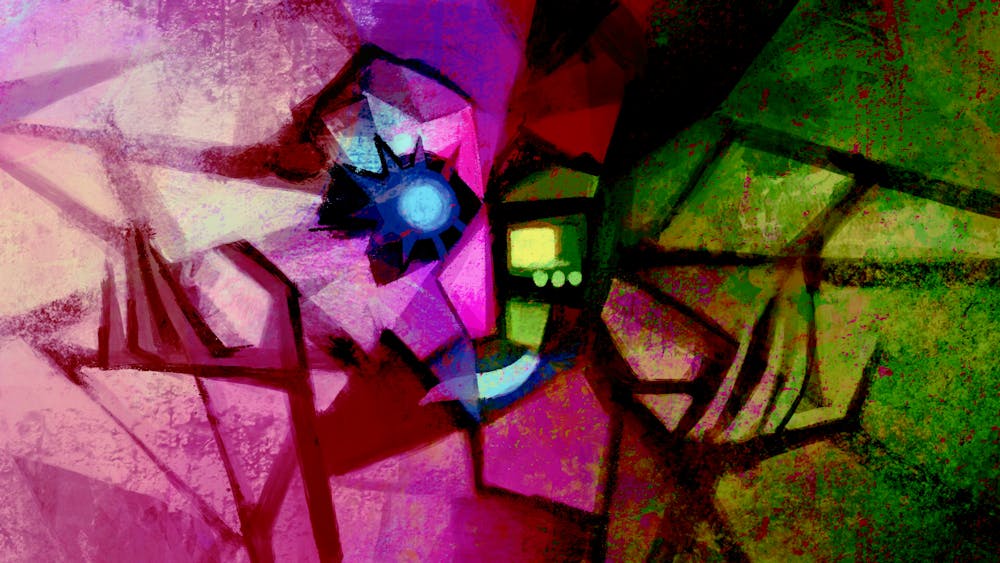The first video on your feed is of Pete Davidson. How predictable.
It's a photo compilation of Davidson, transitions edited in perfect time with a song by The Weeknd and a dramatic flair that could only be attributed to a middle school girl with perhaps a little too much time on her hands. Her muse could also be Adam Driver though. Or Evan Peters. Jay–Z, Natasha Lyonne, or Timothée Chalamet, even, arguably fits the bill here.
Regardless, the video is a hit. The comment section overflows with backhanded, albeit fully genuine, comments such as, "No but why am I so attracted to this" and "Why is this so hot to me" and "bruh the things I would do for them." In case you missed the hashtag, the phenomenon you’re experiencing here is “ugly–hot.”
Then, you scroll. The title of the next video reads, “I was ugly until I spent over $30,000 on a new face.”
In the span of two posts, you’ve experienced two diametrically opposed understandings of beauty. One is an obsession with the unconventional and unexpected; the latter is a single–minded pursuit of perfection, the Instagram Face.
If ugly–hot means finding beauty beyond the standard ideal, beauty by way of Instagram Face is this ultimate ideal. Also known as Cyborgian Face, Instagram Face is that impossible composite of the latest physical vogues. Hourglass figures at once ballerina–core and cat eyes curtained on either side with doe lashes, high cheekbones, full lips, bushy brows (or is it thin eyebrows now?), button noses, and properly Gua Sha–ed jaw lines: These are the hallowed hallmarks of viral potential.
But where this look is most often achieved through makeup, cosmetic surgeries, filters, and editing, the ugly–hot aesthetic prides itself on imperfections. Basically, we have one trend that defines beauty as having a specific set of standards to be met, and another that defines it as having rare, unconventional features.
We consume the contradictions of our internet–scape, for the most part, without thought. After a long day of scrolling, lost and confused among the multitudes of virtual beauties, most of us are left uncertain as to what beauty really is, let alone how we’d like it to function in our own lives.
Rita Copeland, professor of Classical Studies, English, and Comparative Literature at Penn, navigates the aesthetic quagmire of the Internet, drawing upon philosophical and other academic texts to better interpolate our understanding of beauty today.
First, Copeland issues a disclaimer: We would reach no consensus here. "Beauty," Copeland says, "is an essence of being we’ve yet to assign a single definition to." She’s right, and she’s got an infinite number of online forums and thousands of years of philosophical disagreement to prove it.
But still, the dichotomous dilemma—the ugly versus the Instagram—interests her. “It’s a trend, but it’s a trend that’s got its finger on something,” she says. She addresses ugly–hot first with a story: Alcibiades is a handsome young Athenian who wants to seduce the brilliant but infamously ugly Socrates. Socrates won’t have it, what with all his philosophical endeavors, but Alcibiades remains infatuated.
“Without beauty, Socrates is more beautiful, because to engage with him is to engage with this supremely beautiful thing that we desire, or that we long for, and that’s truth," Copeland says.
This idea of accessing the truth through the beautiful is a pretty big undertaking. Copeland discusses Socrates as the “incarnation of your ugly–hot.” Despite not fitting the Hellenic ideal of beauty, it is Socrates’ unique character that makes him irresistible.
In essence, ugly–hot assumes that to be beautiful is to be exceptional. Here, the natural mind and body are attractive precisely because of their irregularities, quirks, and specifications. Hotness derived out of the genuine, even if ugly, is a rare and desired commodity.
"Ugly–hot," Copeland surmises, "might be a way of articulating the idea that erotic desire, which is inspired by the beautiful, is really a desire for a truthfulness that we can’t quite capture.”
As for Instagram Face, she cites neoclassical thinkers, who often thought of the beautiful as perfect parts that worked towards and within their respective engines. That is to say, if things are suitable to their function—even if they must be modified to be so—they are purposeful. And in their purposefulness, they are beautiful. Extending the idea to the cyberspaces of today, we might find beauty then in those aesthetic appearances, which suit the standards and expectations of the internet. In this way, it might be argued that Instagram Faces, conjured up by the filters and algorithmic tilt towards all that is thin and poreless, are perfect parts of the social media engine, and thus beautiful.
If beauty is decided on the basis of functionality, the Instagram Face should be considered monstrously effective, fueling advertisements and providing users with pleasing images that drive them to platforms and keep them glued for hours on end.
Professor Copeland discusses a few other perspectives on beauty—Kant’s love of the natural, Aristotle’s emphasis on symmetry, and how the ancient Greek beauty standards still affect us now. But as Copeland warns might be the case, we are still no closer to a single definition of beauty.
Copeland circles back to an initial thought she’d had on beauty beyond the physical. As much as we are attracted to certain forms, certain looks, and physicalities, there’s always the chance that true beauty involves a more intangible element, something neither ugly–hot nor Instagram Face dives deep enough beneath the surface to encapsulate.
“Unless we're Pygmalion—we don't fall in love with statues. So there's something else that we are profoundly moved by,” she says.
And we don’t fall in love with Instagram models or Pete Davidson compilations, either. At least not yet.

